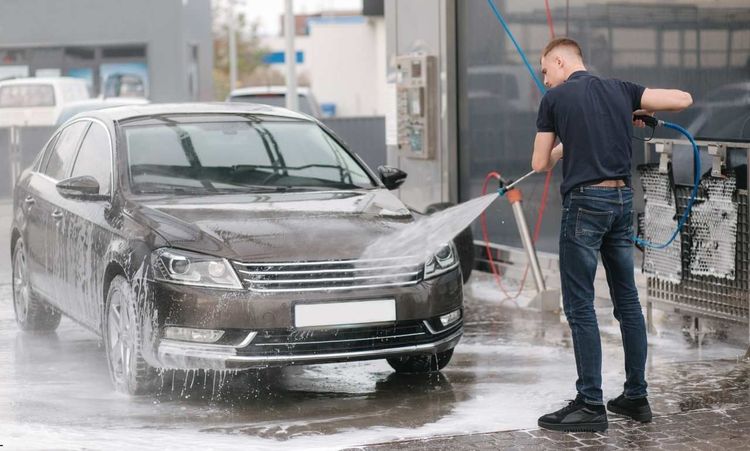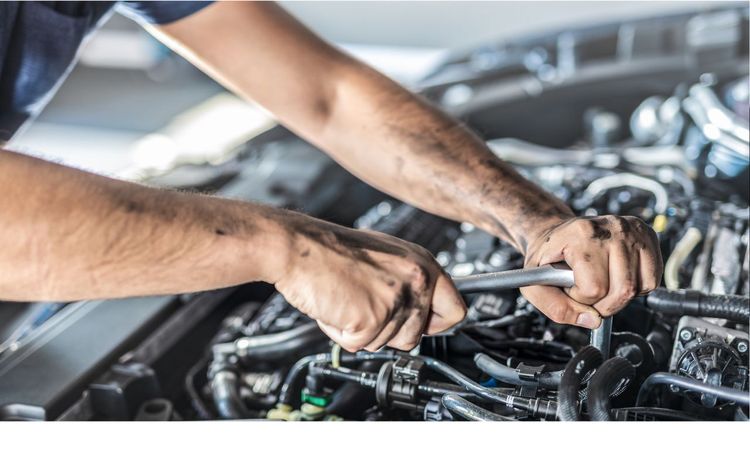Winter weather creates unique challenges for vehicle maintenance. Road salt, snow, and freezing temperatures can wreak havoc on your car's exterior and undercarriage. Many car owners make the mistake of avoiding washes during cold months. This approach actually causes more harm than good. Your vehicle faces constant assault from corrosive materials during winter. Salt used for de-icing roads sticks to every surface it touches. Without proper care, this buildup leads to rust and paint damage. Regular cleaning becomes even more critical when harsh weather conditions persist. Cold temperatures don't mean you should skip car maintenance entirely. Smart washing techniques can protect your investment throughout the winter months. These seven practical tips will help you maintain a clean vehicle while avoiding common cold-weather pitfalls.
Dress Properly
Winter car washing requires the right clothing choices. Waterproof boots prevent slipping on wet surfaces and keep your feet dry. Your safety depends on proper footwear when working around puddles and ice. Waterproof gloves protect your hands from both cold water and harsh chemicals. Regular gloves become useless once they get soaked through. Invest in quality rubber or neoprene gloves designed for wet conditions. These allow better grip while handling washing equipment. Multiple clothing layers work better than one heavy coat. You'll warm up quickly once you start working. Being able to remove layers prevents overheating and excessive sweating. Choose materials that dry quickly if they get splashed.
Avoid cotton materials that stay wet for hours after getting splashed. Synthetic fabrics dry faster and maintain warmth even when damp. Consider wearing old clothes you don't mind getting dirty or stained. Closed-toe shoes are non-negotiable for winter washing sessions. Sandals or flip-flops create safety hazards on wet surfaces. Your feet need protection from both cold water and potential chemical splashes.
Use Warm Water
Hot water cuts through winter grime more effectively than cold alternatives. Lukewarm water works best for most washing tasks without shocking your vehicle's surface. Extreme temperature differences can cause micro scratches on paint surfaces. Road salt dissolves faster in warm water than cold alternatives. This means less scrubbing and reduced risk of scratching your paint job. Warm rinse water also prevents immediate freezing on your vehicle's surface. Fill wash buckets with hot tap water before heading outside. The water will cool to the perfect temperature by the time you start washing. Cold water struggles to break down the thick layer of winter grime that accumulates on vehicles.
Test water temperature on your wrist before applying it to your car. Water that feels comfortably warm to touch works perfectly for washing. Avoid scalding hot water that could damage rubber seals or plastic trim pieces. Bring extra hot water in insulated containers for longer washing sessions. This ensures you maintain proper temperatures throughout the entire process. Cold water becomes ineffective at removing stubborn salt buildup and road debris.
Do Your Washing In The Garage
A heated garage provides the ideal environment for winter car maintenance. Consistent temperatures prevent water from freezing on your vehicle's surface. You'll also avoid fighting wind and precipitation while working. Garage washing eliminates concerns about water spots forming from rapid temperature changes. Your cleaning products work more effectively in controlled conditions. This environment also protects you from harsh weather while you work. Proper ventilation becomes crucial when washing inside enclosed spaces. Open garage doors partially to ensure adequate airflow. Some wash soaps produce fumes that need proper ventilation to remain safe.
Clear adequate space around your vehicle before starting any washing activities. You need room to move freely around all sides of your car. Remove tools, storage items, and other obstacles that might interfere with washing. Consider drainage carefully when washing inside your garage. Water needs somewhere to go besides pooling on your garage floor. Some garages have floor drains that handle excess water perfectly. Others may require careful water management to prevent flooding.
Use Winter Wax
Winter wax provides an extra layer of protection against harsh weather conditions. This protective coating creates a barrier between road salt and your vehicle's paint. Regular wax applications during cold months prevent long-term damage from corrosive materials. Spray wax works better than paste alternatives in cold temperatures. Paste wax becomes difficult to apply when temperatures drop significantly. Spray applications distribute more evenly and require less physical effort in cold conditions. Apply winter wax every four to six weeks during the coldest months. This frequency ensures continuous protection against salt and moisture. Don't wait until you see damage before applying protective coatings.
Wax Application Tips
Clean your vehicle thoroughly before applying any wax products. Wax applied over dirt and grime traps contaminants against your paint surface. This can cause more damage than providing protection. Work in small sections when applying wax in cold temperatures. Products behave differently in winter conditions than summer applications. Take extra time to ensure even coverage across all painted surfaces.
Check The Underbody
The undercarriage takes the worst beating during winter driving conditions. Road salt concentrates in hard-to-reach areas under your vehicle. This buildup accelerates rust formation in critical structural components. Regular undercarriage washing prevents salt from eating through metal components. Use a pressure washer or garden hose to flush these areas thoroughly. Pay special attention to suspension components, brake lines, and exhaust systems. Many automatic car washes offer undercarriage wash options during winter months. This service targets areas you might miss during hand washing. Professional equipment reaches places that standard garden hoses cannot access effectively.
Start undercarriage cleaning from the rear and work toward the front. This prevents pushing debris into areas you've already cleaned. Use steady, overlapping passes to ensure complete coverage of all surfaces. Focus extra attention on wheel wells and suspension components. These areas collect the most salt and debris during winter driving. Thorough cleaning in these spots prevents costly repairs down the road.
Wash The Wipers
Clean windshield wipers are essential for safe winter driving visibility. Salt and road grime build up on wiper blades quickly during winter conditions. Dirty wipers streak your windshield instead of clearing it properly. Remove wiper blades periodically for thorough cleaning with soapy water. This removes embedded salt crystals that cause streaking and scratching. Clean blades last longer and perform better throughout winter weather. Replace washer fluid regularly with winter-specific formulations. Standard fluid freezes in cold temperatures and becomes useless when you need it most. Winter formulas work effectively at much lower temperatures.
Wiper Maintenance Steps
Lift wiper arms away from the windshield before washing your vehicle. This prevents damage to the blades and allows better access for cleaning. Never force frozen wipers away from the glass surface. Check rubber seals around wiper assemblies for damage or wear. Cold temperatures make rubber components brittle and prone to cracking. Replace damaged seals before they allow water penetration into electrical components.
Don't Let Your Windows And Doors Get Iced
Frozen doors and windows create serious problems during winter months. Ice formation in door seals can damage rubber gaskets permanently. Prevention costs far less than replacing damaged weatherstripping components. Apply silicone spray to rubber seals before winter weather hits. This treatment prevents ice from adhering to rubber surfaces. Regular applications throughout winter maintain protection against freezing conditions. Avoid using excessive force on frozen doors or windows. This approach often causes more damage than the original ice problem. Instead, use proper techniques to safely remove ice without damaging components.
Ice Prevention Strategies
Park your vehicle facing east when possible during winter months. Morning sun helps melt ice formation naturally on windshields and windows. This reduces the amount of scraping required before driving. Keep windows slightly cracked when parking in certain conditions. This prevents pressure buildup that can cause windows to stick in their frames. However, only do this when security and weather conditions permit.
Conclusion
Winter car washing requires different approaches than summer maintenance routines. These seven tips help you maintain a clean vehicle while protecting it from harsh weather damage. Proper preparation, technique, and frequency make all the difference in winter car care success. Regular washing during cold months actually protects your investment better than avoiding maintenance entirely. Salt buildup causes far more damage when left untreated throughout winter. Consistent care prevents costly repairs and maintains your vehicle's appearance and value. Start implementing these winter washing strategies before harsh weather arrives. Prevention always costs less than repair work after damage occurs. Your vehicle will thank you with better performance and longer life when properly maintained through winter conditions.




